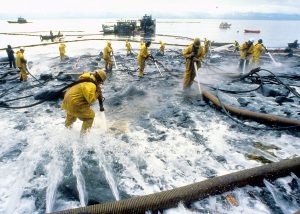 When I began my undergraduate studies at UAS in the fall of 2003, I intended to get a Bachelor of Arts in Elementary Education. It took a long time for me to get serious about completing my degree, but I finished this springs, graduating with a Bachelor of Liberal Arts in Theatre and History. Even as late as last fall, my mind was set on teaching younger kids. One subject I am enthusiastic about is children’s literature. I love reading to kids. Over the course of this past winter, after much consideration and consultation, I decided to pursue Secondary Education. I was unsure even as late as February, but I believe I made the right decision.
When I began my undergraduate studies at UAS in the fall of 2003, I intended to get a Bachelor of Arts in Elementary Education. It took a long time for me to get serious about completing my degree, but I finished this springs, graduating with a Bachelor of Liberal Arts in Theatre and History. Even as late as last fall, my mind was set on teaching younger kids. One subject I am enthusiastic about is children’s literature. I love reading to kids. Over the course of this past winter, after much consideration and consultation, I decided to pursue Secondary Education. I was unsure even as late as February, but I believe I made the right decision.
One of the things I thought I’d miss as a high school teacher was reading to kids. Kathy’s visit yesterday was a revelation, and I absolutely will introduce children’s books into my lesson plans. Kids are kids, even if they’re big kids, and maybe they’ll still enjoy being read to.
Looking through the selection of books Kathy brought yesterday, I was immediately drawn to The Last American Rainforest: Tongass by Shelley Gill and Shannon Cartwright. I couldn’t read it all in the time we had, but the authors encompassed most of what makes Southeast Alaska special.
The story combines a fictional character, a young Tlingit girl, with nonfiction information on the region, encompassing all of the Northwest Coast, of Tlingit, Haida, and Tsimshian. The girl, wanting to make a hat, must search for a salmon tree. She hears traditional stories about Fog Woman, and the more familiar Raven Steals Daylight. More than just Southeast Alaska Native traditions, her journey leads her to a discovery of flora and fauna, the geography, food cultivation, and lessons about the ecology, all interwoven with the spirituality of the land and people. Traditional and contemporary village life is portrayed, as well as illustrations of Native masks, hats, totems, and clan crests. Sea life and sea faring canoes, passing glaciers and wildlife. The strong environmental lesson of clear-cut timber leaves the girl in tears.
I was truly taken aback by the beautiful illustrations and how much the authors were able to cover. A great resource for a social studies class!
